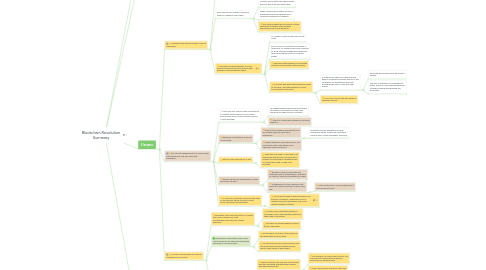
1. 1-Sentence-Summary:
1.1. Blockchain Revolution explains how the power of this new technology behind Bitcoin can transform our world financially by improving the way we store our money and do business to make it more fair, transparent, equal, and free from corruption.
2. Favorite quote from the author:
2.1. "We believe that the economy works best when it works for everyone, and this new platform is an engine of inclusion." - Don Tapscott
3. 3 lessons:
3.1. Tampering with the blockchain is almost impossible.
3.1.1. Every transaction is recorded in what’s known as a block.
3.1.2. Each new block is linked to the block before it, making it like a chain.
3.1.2.1. Each new block placed on the chain contains information from the previous block as well as its own information.
3.1.2.2. When a new block is added, its data is broadcast across the network and a consensus algorithm is triggered.
3.1.2.3. This system makes the blockchain virtually impossible to tamper with, because everything must line up perfectly.
3.1.3. The proof-of-work algorithm is a way Bitcoin ensures that records are accurate without a central authority figure.
3.1.3.1. It is used to create a new block on the chain.
3.1.3.2. But to confirm a transaction and build a new block, so-called miners must compete to solve complex mathematical problems that need huge amounts of computer power.
3.1.3.3. The miners get rewards for solving the problem correctly with cryptocurrency.
3.1.3.4. It ensures that when new blocks are added to the chain, the others behind it cannot be removed and replaced.
3.1.3.4.1. In order to pull this off, someone would have to create blocks faster than all of the computers on the network and have enough power left to solve the math puzzle.
3.1.3.4.2. All of this is to say that the system is extremely secure.
3.2. Our current banking system is much slower, more expensive, and less equal than blockchain.
3.2.1. Have you ever tried to make a transaction or deposit and you were told you would have to wait one or more business days for it to go through?
3.2.1.1. You might wonder why this kind of thing is still taking so long when you can email someone and they receive it instantly.
3.2.1.2. It goes to show how outdated our financial system is.
3.2.2. Banks are unnecessarily slow and complicated.
3.2.2.1. Even if you’re doing online banking, you are slowed down by a myriad of middlemen.
3.2.2.1.1. Examples of these middlemen include investment banks, credit card companies, security firms, stock exchanges, and more.
3.2.2.2. These middlemen make things slow, and even worse, they make things more expensive and profit from it.
3.2.3. Bitcoin could eliminate all of this.
3.2.3.1. They take only about 10 minutes to be transferred directly from one account to another account with no middlemen like you would have with a credit card purchase.
3.2.4. Besides being slow and expensive, banks don’t help the poor.
3.2.4.1. Because of their complicated and expensive way of doing things, a payment of under 20 cents isn’t profitable for them.
3.2.4.2. A staggering 2.2 billion people in the world are living on less than a dollar every day.
3.2.4.2.1. This is partly why 2.2 billion people don’t have a bank account.
3.2.5. In contrast, blockchain could provide many of the services a bank could at no cost since it handles small payments.
3.2.5.1. All one would need to use blockchain is an internet connection, making this form of money much more accessible, and not to mention globally universal.
3.3. You can use blockchain to allow for transparency or security.
3.3.1. Blockchain users have the option to choose their level of privacy by using cryptographic keys that can be their signature.
3.3.1.1. Anyone can protect their privacy by choosing to use a new signature each time they make a transaction.
3.3.1.2. But they can decide whatever level of privacy they want.
3.3.2. Government organizations and NGOs could choose to use the same identifiable signature on all transactions.
3.3.2.1. So the public could track their spending and know they can trust them.
3.3.2.2. For the first time ever, governments could use blockchain and show taxpayers how exactly their money is being spent.
3.3.3. Blockchain also lets you manage your presence on the system by using smart contracts.
3.3.3.1. These are where you pick and choose what data can be shared with authorized people and what stays private.
3.3.3.1.1. For example, if a cop pulled you over, you could choose to give them temporary access to your personal data.
3.3.3.1.2. They could quickly and easily see in the database that you don’t have a criminal record.
3.3.3.2. If you wanted to earn some extra money, you could give out pieces of your personal data to an advertising or marketing company.
3.3.3.3. You could even donate information to medical researchers who need it and all the while keep your identity secret.
